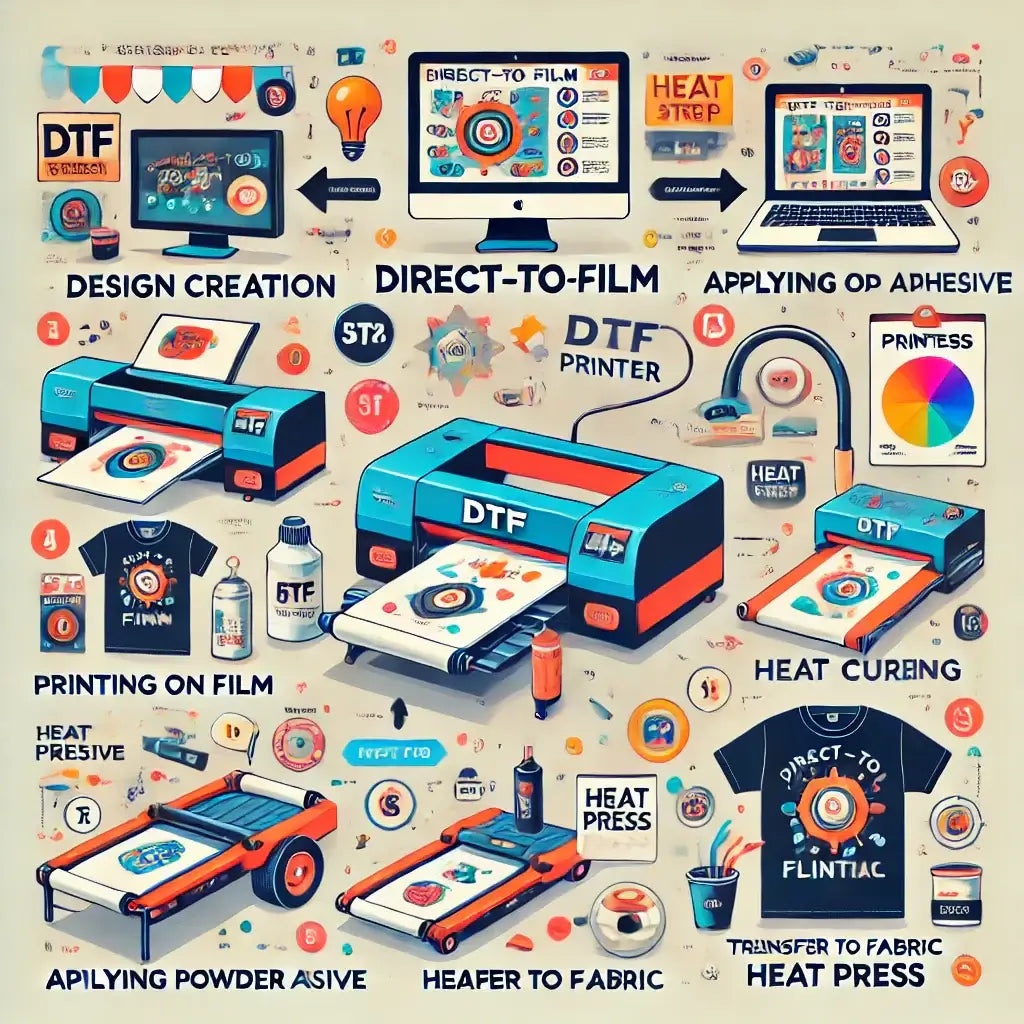
How Does DTF Printing Work
Share
DTF (Direct-to-Film) printing is a process that allows detailed, full-color designs to be transferred to a variety of fabrics, providing a soft feel and durable finish. Here’s a step-by-step guide to how it works:
1. Design Creation
- The process begins with creating the design on a computer using graphic design software (such as Photoshop or Illustrator). The design can include detailed colors, gradients, and intricate patterns that will be faithfully reproduced.
2. Printing on Film
- The prepared design is printed onto a special PET (Polyethylene Terephthalate) film using a DTF printer. This printer uses specific ink types—typically pigment inks—that adhere well to the film and transfer effectively to fabric.
3. Applying Powder Adhesive
- While the ink on the film is still wet, a powdered adhesive is applied to the printed design. This powder adheres to the inked areas, creating a bond that will later help stick the design to the fabric. This powder is crucial to ensure a strong and lasting transfer.
4. Heat Curing
- The film with the adhesive-coated design is then heat-cured. This can be done with a heat press or curing oven to set the adhesive. The heat activates the adhesive powder, preparing it to bond securely to the fabric during the transfer.
5. Transfer to Fabric
- The design, now cured on the PET film, is placed on the fabric (such as a t-shirt, hoodie, tote bag, etc.). A heat press is used again to transfer the design onto the fabric. After pressing, the film is peeled away, leaving the design transferred onto the material.
6. Final Curing
- For added durability, the garment may undergo a final heat press to ensure that the design is fully cured and bonded to the fabric.
Advantages of DTF Printing
- Versatile Fabric Options: Works on cotton, polyester, blends, and even nylon, which is often difficult for other printing methods.
- Durable and Vibrant Colors: The adhesive and ink combination allows the design to withstand multiple washes without significant fading.
- Soft Feel: Unlike vinyl, which can be thick and stiff, DTF designs are thin and flexible, giving a softer feel.
- Economical for Short Runs: Unlike screen printing, DTF doesn’t require setup costs for each design, making it ideal for custom, small-batch orders.
DTF printing is a great option for customized apparel businesses, offering flexibility, vibrant colors, and durability across different fabric types.
